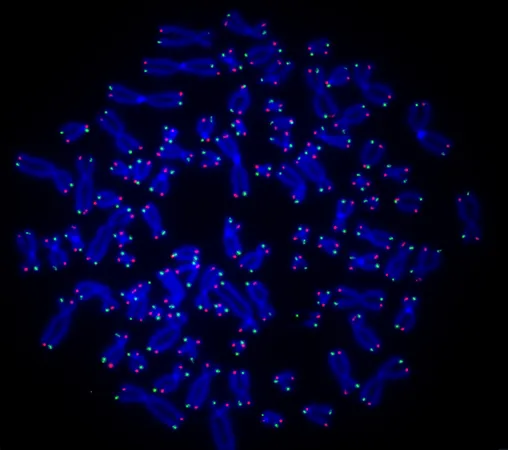
Breakthrough Discovery: Could a Second Woman be Cured of HIV Thanks to Stem Cell Treatment?
2025-01-01
Author: Yu
Significant Advancement in HIV Treatment
In a significant advancement in the fight against HIV, medical experts have presented an encouraging case at the recent HIV Drug Therapy meeting in Glasgow. An unnamed woman, treated in France, appears to have been cured of HIV after undergoing a stem cell transplant originally intended for her leukemia treatment. This remarkable outcome is attributed to the donor possessing a rare genetic mutation that effectively blocks HIV from infiltrating cells.
The Case of the French Patient
The French patient, a woman in her mid-50s, was diagnosed with HIV in 1999 and had maintained a stable undetectable viral load for years thanks to early and consistent antiretroviral therapy. In February 2020, she faced a new challenge—diagnosis of acute myeloid leukemia. By July of that year, she underwent a stem cell transplant from a donor with two copies of the CCR5-delta32 mutation, known for its preventative capabilities against most strains of HIV.
The transplant was not without risk; such procedures are typically reserved for HIV-positive individuals battling advanced cancers. Nevertheless, the results so far are promising. After halting her antiretroviral treatment nearly 39 months following the transplant, this woman has not experienced any viral rebound. Recent assessments revealed no trace of HIV in her blood, marking a potential turning point in HIV treatment protocols.
Historical Context: A Glimmer of Hope
This case echoes previous landmark instances in which individuals have seemingly been cured of HIV post-stem cell transplant, notably the cases of Timothy Ray Brown (the Berlin Patient) and Adam Castillejo (the London Patient), who both received transplants from donors with the aforementioned genetic mutation. Their journeys form a blueprint of hope for the HIV community, indicating that a small subset of patients may achieve functional cures through similar treatments.
However, the path to a widespread cure remains complex. Many factors contribute to the success of these transplants: not only the genetic makeup of the donor but also the specifics of the conditioning regimens and the response of the recipient’s immune system. Researchers have found that the successful cases often involve rigorous therapeutic protocols that can carry significant risks.
Insights into the Future of HIV Treatment
Emerging insights from the cases of successful stem cell transplants are propelling researchers to explore alternative methods for a cure. Researchers are investigating innovative approaches such as CRISPR gene editing, which may offer less invasive, more accessible treatments for broader populations living with HIV.
Dr. Sharon Lewin from the University of Melbourne, an authority in HIV research, emphasizes the importance of each new case in shaping our understanding of potential cures. "These rare examples not only provide inspiration for those living with HIV but also pave the way for realistic treatment interventions," she remarked.
Conclusion
In conclusion, while this latest development provides a hopeful narrative in the ongoing battle against HIV, challenges remain. The arduous nature of stem cell transplants, combined with the high costs and risks involved, means it's not a viable solution for most. Nevertheless, each new case adds to the growing body of knowledge, fueling optimism for future breakthroughs that could one day benefit millions. Stay tuned as researchers continue to unravel the complexities of HIV treatment—each revelation brings us one step closer to a functional cure!



 Brasil (PT)
Brasil (PT)
 Canada (EN)
Canada (EN)
 Chile (ES)
Chile (ES)
 Česko (CS)
Česko (CS)
 대한민국 (KO)
대한민국 (KO)
 España (ES)
España (ES)
 France (FR)
France (FR)
 Hong Kong (EN)
Hong Kong (EN)
 Italia (IT)
Italia (IT)
 日本 (JA)
日本 (JA)
 Magyarország (HU)
Magyarország (HU)
 Norge (NO)
Norge (NO)
 Polska (PL)
Polska (PL)
 Schweiz (DE)
Schweiz (DE)
 Singapore (EN)
Singapore (EN)
 Sverige (SV)
Sverige (SV)
 Suomi (FI)
Suomi (FI)
 Türkiye (TR)
Türkiye (TR)
 الإمارات العربية المتحدة (AR)
الإمارات العربية المتحدة (AR)